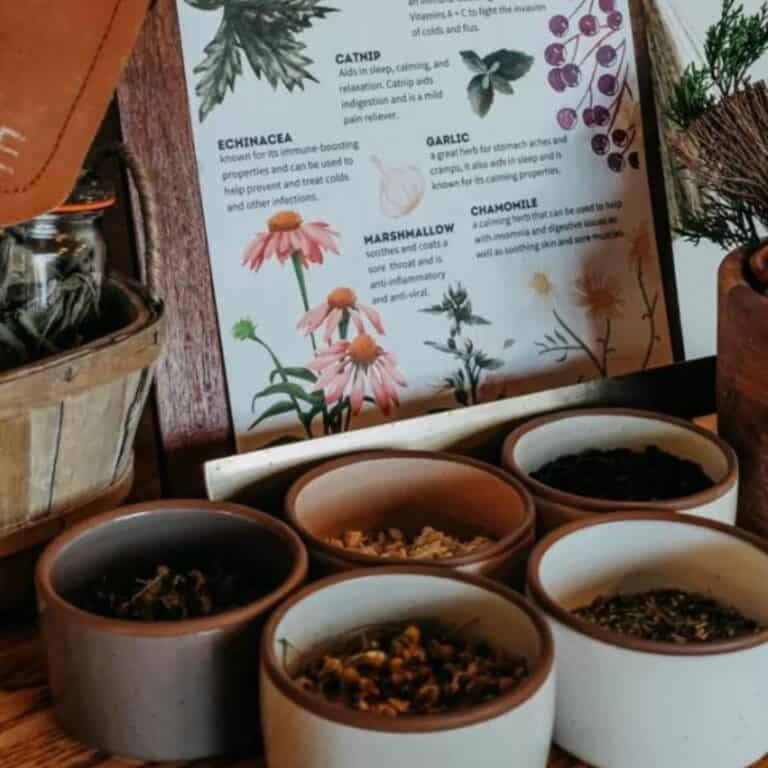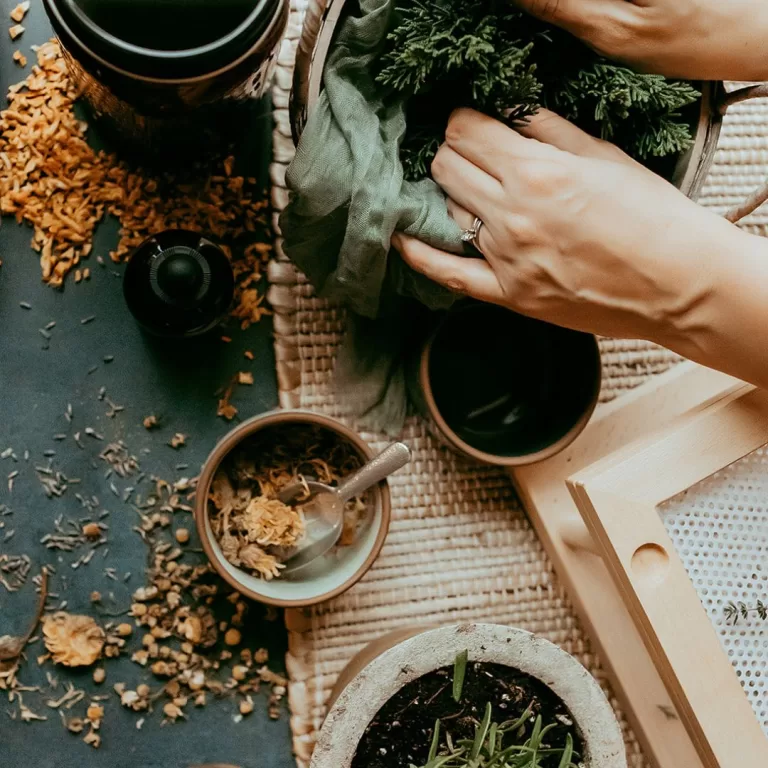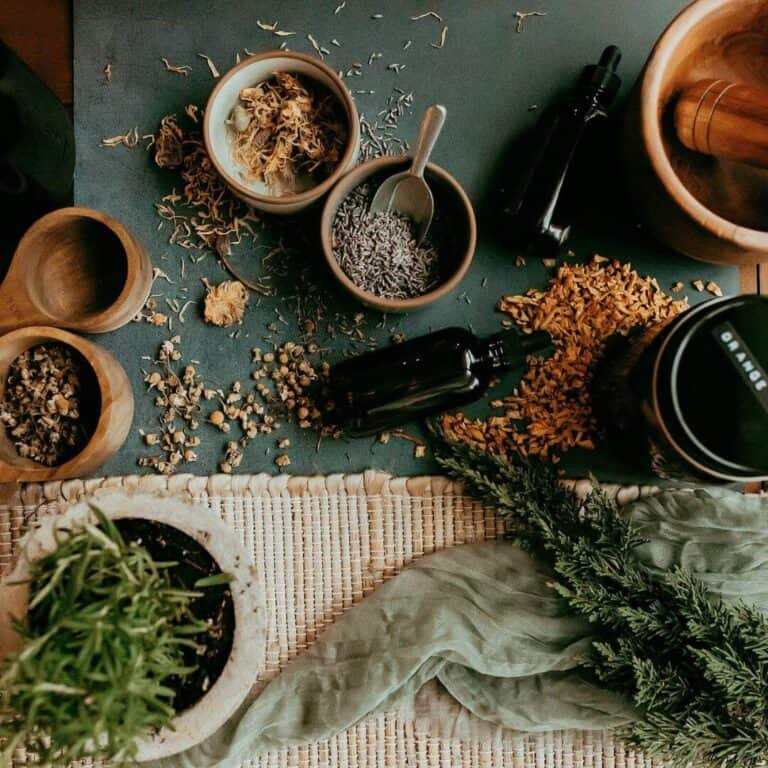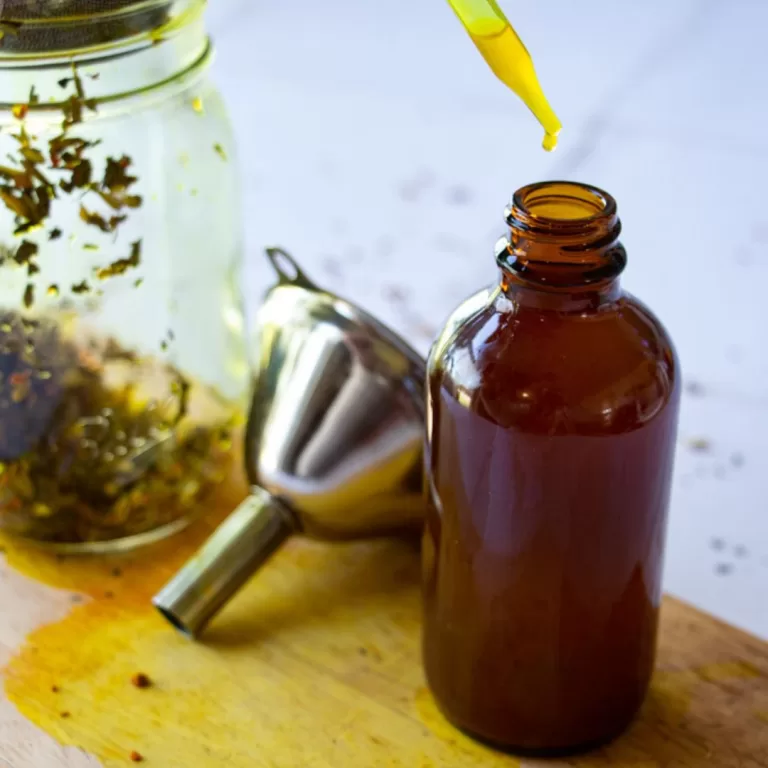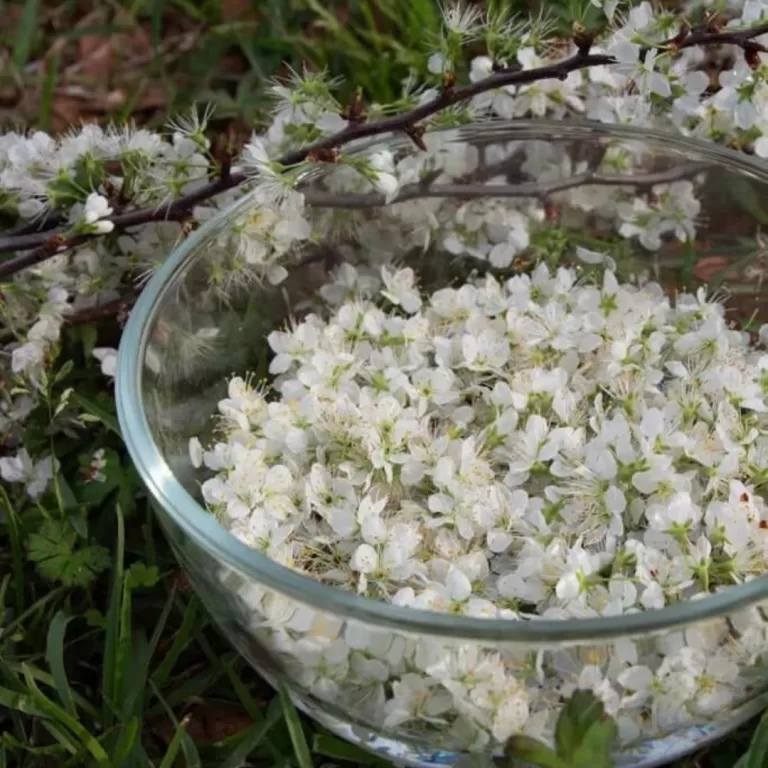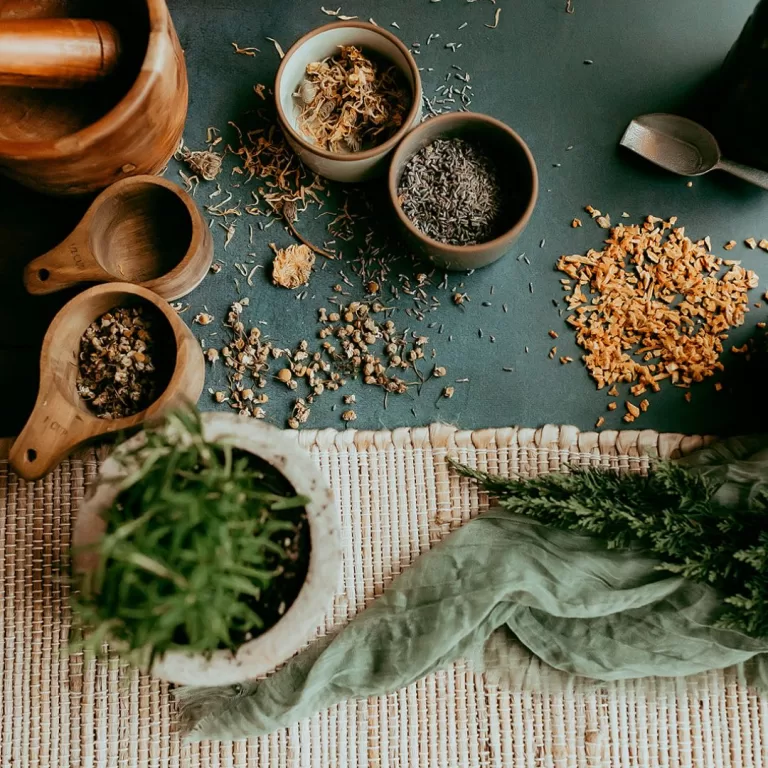Growing Herbs in Raised Beds: A Simple Guide for Gardeners
As a beginner gardener, I’ve discovered the numerous benefits of growing herbs in raised beds. It is so easy, and herbs are a great place to start gardening (they are harder to kill than vegetables in my opinion!). Not only do raised beds provide better drainage and pest control, but they also make it easier to tend to your plants. This article will discuss how you too can enjoy the fresh flavors and aromas of homegrown herbs by using raised beds in your garden.
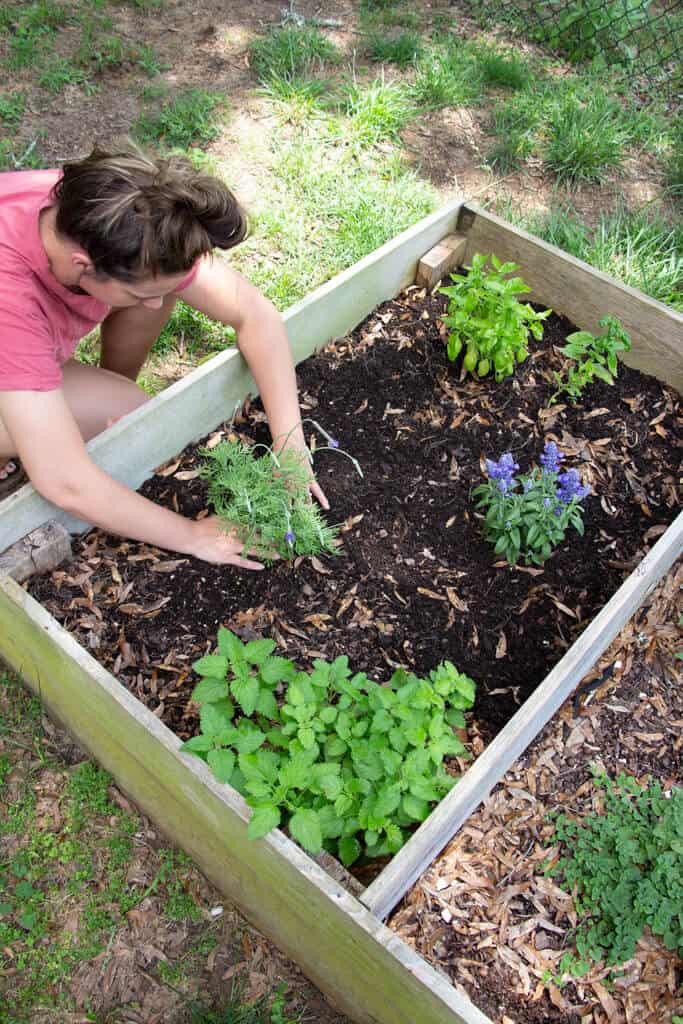
There are so many benefits to growing herbs in raised beds
Raised beds are particularly useful for growing a variety of herbs, as they allow for optimal soil conditions and easier maintenance. I’ve found that by filling my beds with a high-quality, well-draining soil mix, my herbs are more productive and healthier overall. Plus, the additional height makes it easier to keep an eye on my plants and tend to any issues that may arise.
One of the greatest joys of growing herbs in raised beds is the accessibility and versatility they offer. I’ve experimented with countless combinations of herbs, such as basil, rosemary, and thyme, to create a fragrant and visually diverse garden display (I’ve also made some ugly mistakes along the way). Additionally, with herbs so close at hand, it’s easy to incorporate them into my daily cooking, as well as crafting soothing herbal teas or aromatic bath and body products.
Not convinced you need a raised bed for your herbs? Check out the following posts.
Selecting and Preparing the Raised Bed
Size and Location
When choosing a location for your raised bed, look for an area that gets plenty of sunshine. Full sun is necessary for most herbs to grow well. A spot that receives at least 6-8 hours of sunlight a day works best. Depending on your garden design and available space, opt for raised beds that are at least 4 feet wide and 8 feet long. This size allows for a decent number of new plants to be grown, whether it’s for a vegetable garden or just herbs.
As for the height of the raised bed, a minimum of 10-12 inches works well. It gives enough room for quality soil and proper root development.
The raised bed at my current home is a 4X8′ bed divided into three sections. Unfortunately, it does not get as much sun as I’d like, but it does the job!

Soil and Drainage
Once you’ve picked the perfect spot and size for your raised bed, it’s time to prepare the soil. Good soil is essential for healthy plant growth.
For most herbs, start with a mix of topsoil, compost, and peat moss, which provides a fertile growing environment. A 50% topsoil, 30% compost, and 20% peat moss mix works well.
Here’s a simple breakdown of my soil mix:
- 50% Topsoil
- 30% Compost
- 20% Peat moss
Make sure to ensure that you have proper drainage since herbs generally do not thrive in waterlogged soil. If needed, I add a layer of small rocks or gravel at the bottom of the bed to promote better drainage (this is especially important for Mediterranean herbs- most about those later in this post!). In addition, make sure the raised bed is level so that water evenly distributes throughout the bed.
By following these guidelines, your raised herb garden is off to a great start. With quality soil, good drainage, and plenty of sunshine, you can expect a bountiful harvest of flavorful herbs that will enhance any dish you create.
Choosing Herb Varieties for Raised Beds
When it comes to growing herbs in raised beds, there are many varieties to choose from. I’ll help you navigate through some of the different herb options so you can make the best choices for your garden. We will look at perennial herbs, annual herbs, culinary herbs, and Mediterranean herbs.
Perennial Herbs
Perennial herbs come back year after year, which makes them a great investment for any raised bed. Some of my favorite perennial herb plants include:
- Rosemary
- Thyme
- Mint
- Chives
- Lavender
These herbaceous plants have shallow roots, allowing them to thrive in raised beds. I love how they require little maintenance and provide fresh herbs for several years.
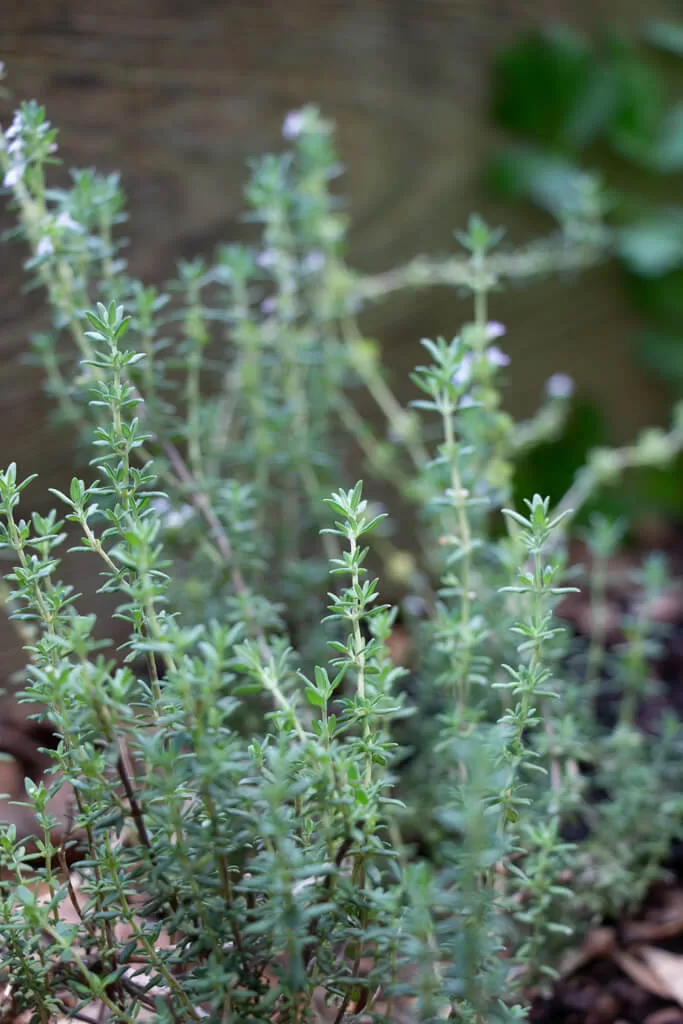
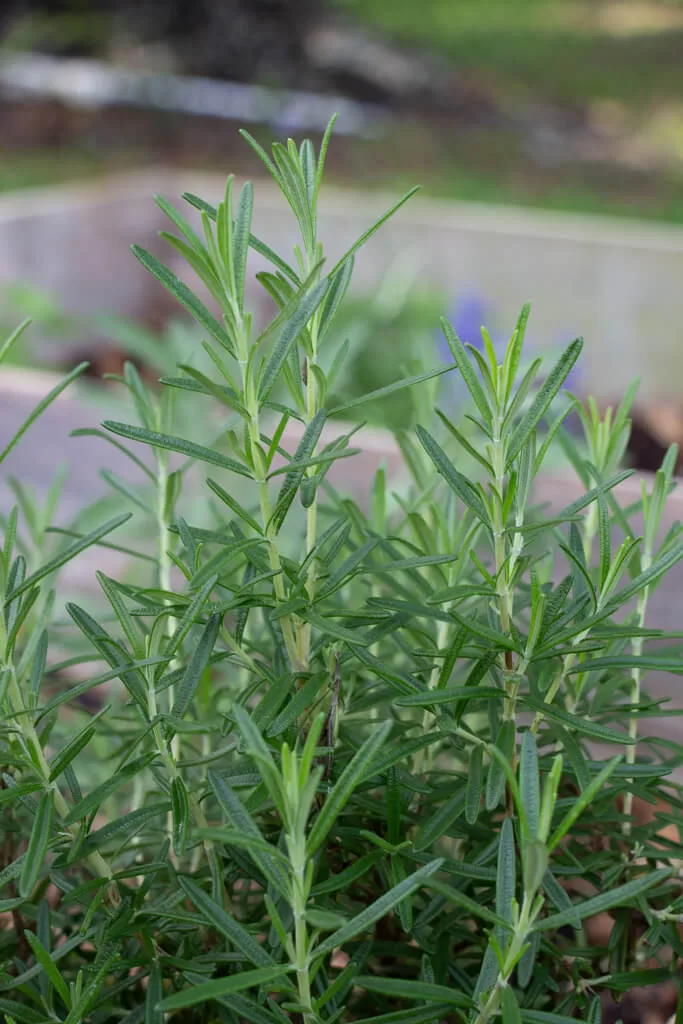
Annual Herbs
Unlike perennial herbs, annual herbs grow for just one season, and you will need to replant them every year. Some popular annual herbs include:
- Basil
- Cilantro
- Dill
- Parsley
Though they require planting each year, annual herbs offer me a fresh variety each season, and they are some of the easiest herbs to grow in raised beds.
Culinary Herbs
As someone who enjoys cooking, I can’t imagine my raised bed without culinary herbs. These herbs deliver the best results in terms of freshness and flavor. Here are some culinary herbs that I love to grow:
| Fresh Herb | Use |
|---|---|
| Basil | Pesto, tomato dishes, and salads |
| Rosemary | Roasts, soups, potatoes, and Mediterranean dishes |
| Parsley | Garnishes, sauces, and soups |
| Cilantro | Mexican and Asian dishes, salsas, and salads |
| Dill | Fish dishes, pickles, and salad dressings |
By growing these herbs, I can easily enhance my dishes while enjoying the convenience of having them right in my garden.
Mediterranean Herbs
Mediterranean herbs are a group of herbs originating from the Mediterranean region, and they typically prefer well-drained soil, which makes them perfect for raised beds. Some of my favorite Mediterranean herbs include:
- Thyme
- Rosemary
- Oregano
- Sage
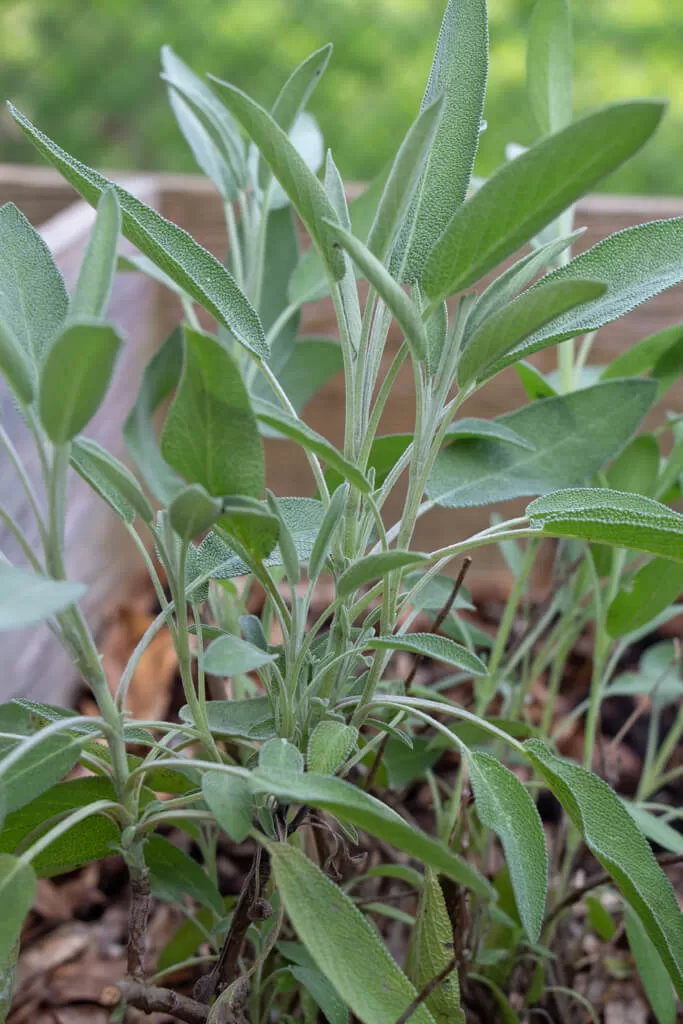
I find these herbs to be both beautiful and functional plants to position near the edges of my raised bed, where they can enjoy the sun and warmth they need to grow. They also make for killer broths packed full of nutrients for cold and flu season.
Companion planting
Companion planting refers to the practice of growing certain plants together to enhance their growth, deter pests, and improve overall garden health. Here are some companion planting suggestions for the herbs mentioned above:
- Rosemary:
- Good companions: Sage, thyme, oregano, lavender
- Rosemary benefits from being planted alongside other aromatic herbs like sage, thyme, oregano, and lavender, as they can enhance each other’s growth and repel pests.
- Thyme:
- Good companions: Rosemary, oregano, sage
- Thyme is a great companion for rosemary, oregano, and sage. These herbs have similar growth requirements and can thrive together.
- Chives:
- Good companions: Carrots, tomatoes, roses
- Chives make great companions for carrots, tomatoes, and roses. They deter pests like aphids and protect their companion plants from infestation.
- Lavender:
- Good companions: Rosemary, thyme, oregano, sage
- Lavender pairs well with rosemary, thyme, oregano, and sage. These herbs have similar needs and can create a beautiful, fragrant herb garden together.
- Oregano:
- Good companions: Rosemary, thyme, sage
- Oregano grows well with rosemary, thyme, and sage. These herbs complement each other in terms of growth habits and can provide a diverse range of flavors and scents to your garden.
- Sage:
- Good companions: Rosemary, thyme, oregano
- Sage pairs well with rosemary, thyme, and oregano. These herbs have similar needs and can be planted together to create a harmonious herb garden.
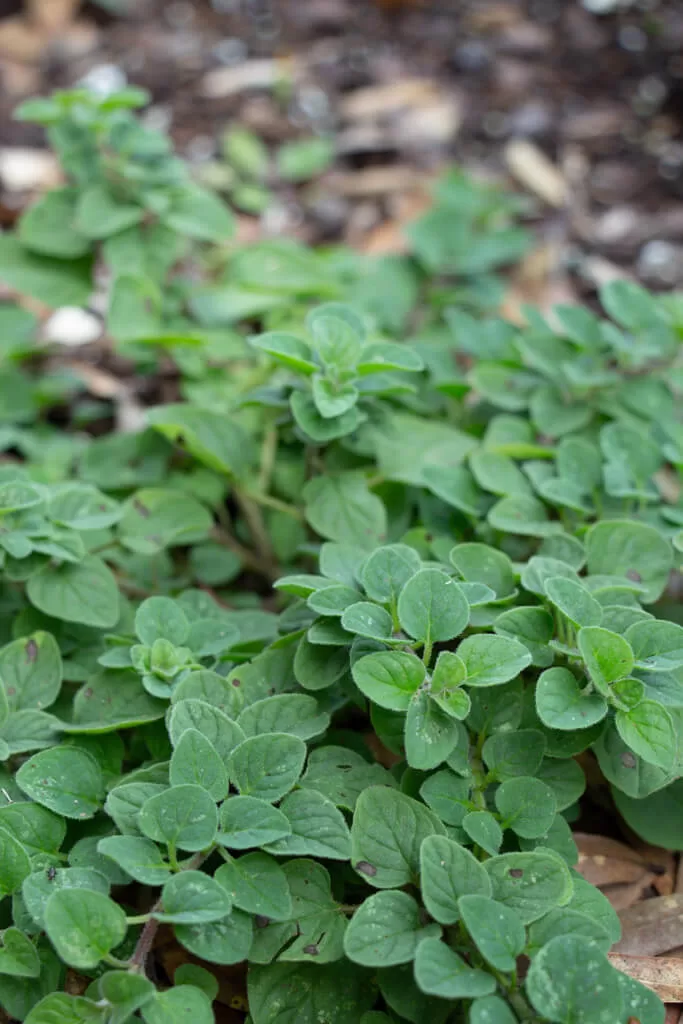
Non-Compatible Herbs
Don’t plant these herbs in the same beds!
- Mint and everything else: Mint is known for its vigorous growth and tendency to spread rapidly. It’s best to grow mint in containers or dedicated beds to prevent it from taking over other herbs or plants in the garden.
- Dill and fennel: Dill and fennel belong to the same family (Apiaceae) and can cross-pollinate if planted too close to each other. This can result in hybridized seeds and affect the flavor and characteristics of both plants. To maintain the integrity of these herbs, it’s advisable to separate them.
- Basil and rue: Basil and rue are not compatible due to their different growth requirements. Rue contains compounds that can inhibit the growth of basil and other plants. It’s best to keep these herbs apart in the garden.
- Cilantro and fennel: Cilantro and fennel are incompatible because cilantro is a cool-season herb, while fennel prefers warmer conditions. Planting them together can result in poor growth and flavor quality for both herbs.
- Rosemary and basil: Rosemary and basil have different water and sunlight requirements. Rosemary prefers well-drained soil and drier conditions, while basil prefers more moisture. Planting them together can lead to competition for resources and may hinder their growth.
Remember that these are general guidelines, and the specific conditions and requirements of your garden may influence the success of companion planting. Observing the growth and interactions of your herbs will help you make informed decisions about which combinations work best in your specific environment.

Flowers to Enhance Your Raised Bed Herb Garden
Planting flowers near your herb garden can serve multiple purposes, such as attracting beneficial insects, repelling pests, and adding aesthetic appeal.
Flowers to Compliment Your Herbs:
- Marigolds: Marigolds are known for their strong scent, which can help repel pests like aphids, nematodes, and whiteflies. They also attract beneficial insects like ladybugs and hoverflies, which prey on garden pests.
- Nasturtiums: Nasturtiums have vibrant flowers and edible leaves that can add beauty and flavor to your garden. These flowers attract aphids away from your herbs, acting as sacrificial plants. Additionally, nasturtiums attract pollinators and can enhance the overall biodiversity of your garden.
- Calendula: Calendula, also known as pot marigold, has beautiful yellow and orange flowers. They attract pollinators like bees and butterflies and can repel harmful insects like aphids and whiteflies.
- Lavender: Lavender is both an herb and a flower, and it can be a fantastic addition to your herb garden. The fragrant flowers attract pollinators while also repelling pests like mosquitoes and moths.
- Bee balm: Bee balm, also known as Monarda, produces attractive flowers that come in various colors, including red, pink, and purple. As the name suggests, it attracts bees, butterflies, and hummingbirds, which help with pollination in your garden.
- Borage: Borage is an herb with lovely blue star-shaped flowers that attract bees and other pollinators. It can enhance pollination in your herb garden and improve overall plant health.
- Chamomile: Chamomile is not only a useful herb but also a charming flower. It has daisy-like blooms with a sweet fragrance. Chamomile attracts beneficial insects like hoverflies and parasitic wasps, which help control aphids and other pests.
These are just a few examples, and there are many other flowers that can complement your herb garden. When selecting flowers, consider their growth requirements, compatibility with your herbs, and the specific benefits you wish to achieve. By incorporating a variety of flowers, you can create a visually appealing and thriving garden ecosystem.
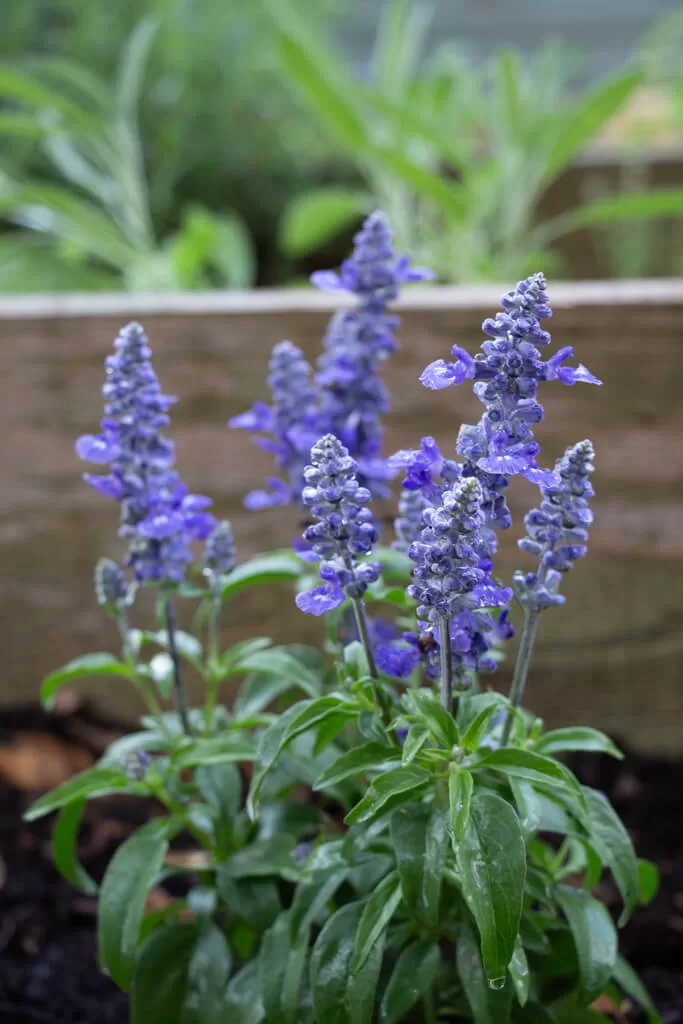
Raise Bed Layouts for Herbs
Depending on if your raised bed is floating or against a wall or fence, there are different layouts that can maximize the space and visual appeal.
For all raised bed herb gardens:
- Consider companion planting by grouping compatible herbs together. For example, you can plant rosemary, thyme, and sage in the same row, as they have similar growth requirements and can enhance each other’s growth.
- Leave enough space between each herb to accommodate its mature size and ensure proper air circulation. This spacing will help prevent overcrowding and reduce the risk of disease.
- Incorporate flowers, such as marigolds, nasturtiums, or calendula, along the edges or in between the herbs to attract beneficial insects and add beauty to the garden.
- Place a layer of mulch around the herbs to help retain moisture, suppress weeds, and maintain a tidy appearance.
For a raised bed against a wall or fence:
- Place taller herbs, such as rosemary and sage, toward the back of the raised bed. These herbs can grow larger and provide a natural backdrop for the rest of the garden.
- Plant medium-sized herbs, such as thyme, oregano, and lavender, in the middle rows. These herbs will add depth and fill out the garden.
- Towards the front or edges of the raised bed, plant smaller herbs. These herbs are typically lower-growing and can be easily accessible for harvesting.
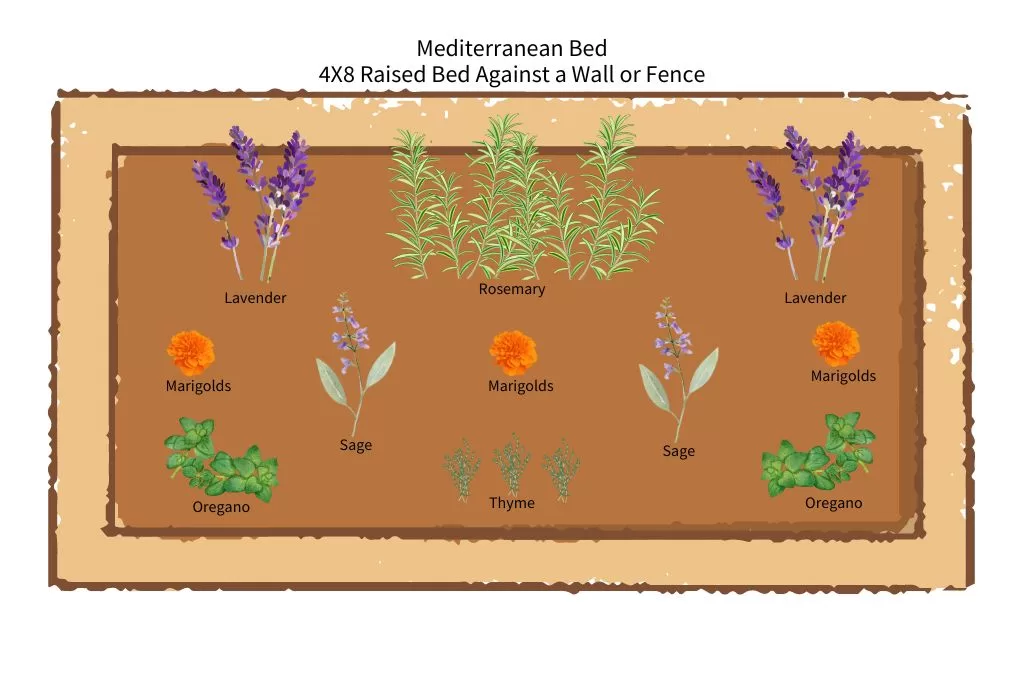
For a floating raised bed with access to all sides:
- Place taller herbs, such as rosemary and sage, toward the middle of the raised bed. These herbs can grow larger and provide a natural backdrop for the rest of the garden.
- Plant medium-sized herbs, such as thyme, oregano, and lavender, in the center. These herbs will add depth and fill out the garden.
- Towards the edges of the raised bed, plant smaller herbs. These herbs are typically lower-growing and can be easily accessible for harvesting.
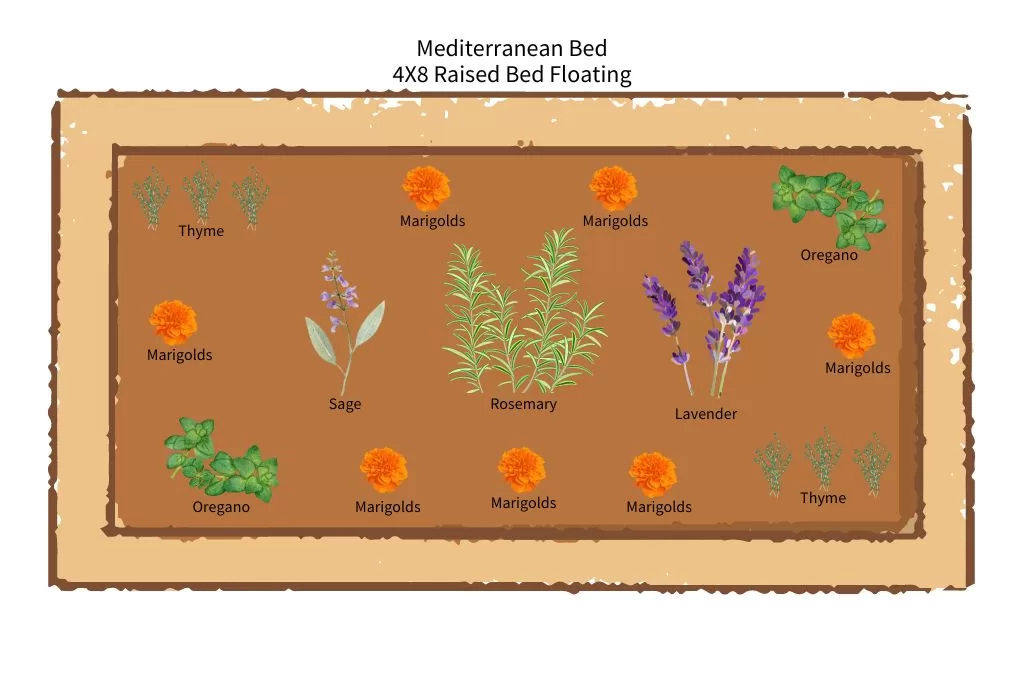
As a reminder, I don’t recommend planting members of the mint family with other herbs, as they will take over. You can opt for a split bed or plant them in a pot on their own.

Planting and Caring for Herbs
When to Plant
The best time to plant most herbs in the garden is in early spring, just as the warm weather starts. If you are in the U.S., learn your grow zone and start planning your garden in advance so you can research the best time for you.
Some herbs like lemon verbena and mint family plants prefer to be planted in late summer. For any herb, I usually check my local garden center or the plant’s instructions for the best planting times for my area.
Water and Nutrition
Some herbs thrive in different soil types, but they all need well-draining soil with plenty of organic matter. I like to mix compost into the soil of my raised beds to improve drainage and add some nutrients. Sandy soils tend to dry out faster, so you should add more compost to those.
I only use rainwater and compost as my source of fertilizer, I don’t add any of the fancy stuff.
Regular watering is essential for young plants. However, the amount of water varies for different herbs. For instance, lemon balm likes moist soil, while woody herbs like rosemary need less watering, as they prefer drier soil.
When you think of Mediterranean herbs, think of the coast of Greece and what that environment is like (a nice visualization, eh?). Try to recreate those conditions as best as possible.

Pruning and Harvesting
Generally, I only prune my herbs as I use them because I use them in my everyday life for cooking and herbal remedies, but I also like to dry and store them and preserve them to use throughout the whole year.
When harvesting my herbs, I take care not to remove more than a third of the plant. I have found that using a gentle touch when harvesting any herb is important to prevent damaging plant materials.
Pest Control
There are several all-natural methods you can employ to keep your garden (mostly) pest-free:
- Companion planting: Certain plants have natural repellent properties that can deter pests. For example, planting marigolds, basil, or mint around your herb garden can help repel pests like aphids, beetles, and mosquitoes.
- Neem oil: Neem oil is derived from the neem tree and is an effective natural insecticide. It can be used to control a variety of common garden pests, including aphids, mealybugs, and caterpillars.
- Homemade sprays: You can create homemade sprays using ingredients like garlic, onion, hot peppers, or soap. These sprays can help deter pests when applied to plants. For example, a mixture of crushed garlic cloves, water, and a few drops of dish soap can be effective against aphids.
- Handpicking: You can physically remove slugs and caterpillars by hand.
- Beneficial insects: Introducing beneficial insects like ladybugs, lacewings, or praying mantises to your garden can help control pest populations by feeding on common garden pests.
- Crop rotation and intercropping: Rotating your crops and intercropping herbs with other plants can help disrupt the life cycles of pests and reduce pest problems. Pests often target specific plants or families of plants, so diversifying your garden can make it less attractive to pests.
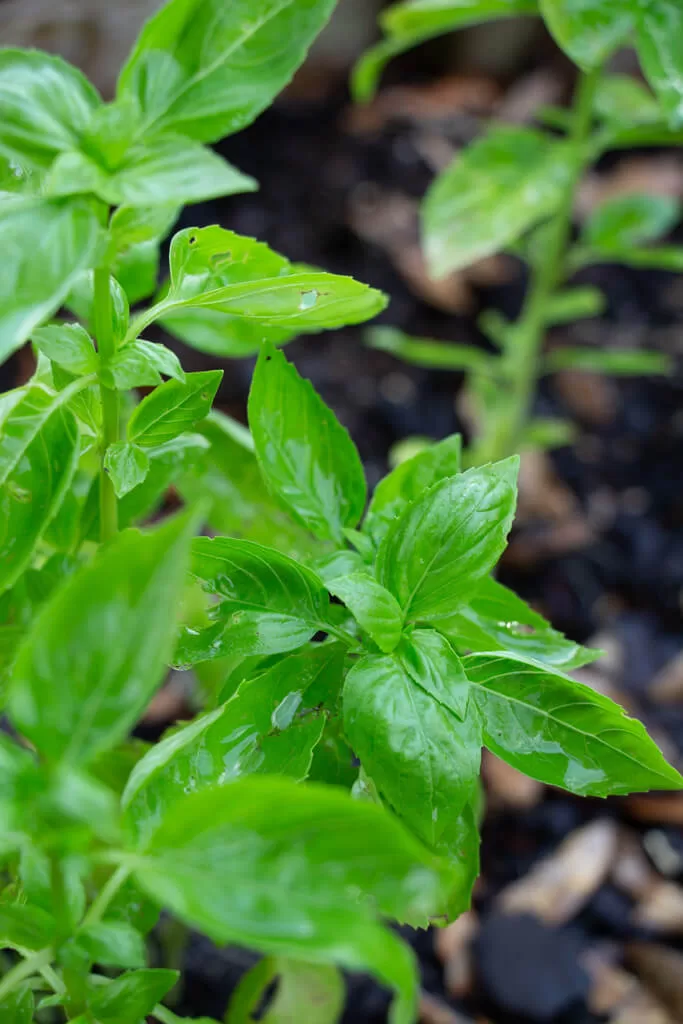
Ready to start your raised bed herb garden?
Growing herbs in raised bed gardens is a good idea for anyone looking to have their own herb garden. It provides an efficient and organized way to cultivate herbs right at your doorstep. By opting for raised beds, you can create the ideal growing conditions for your favorite herbs, ensuring they thrive and flourish.
Check out this post on the Most Expensive Herbs to Grow at Home to best utilize your space!
Not only does cultivating herbs in raised beds offer convenience and accessibility, but it also allows you to personalize your garden with the herbs you love most.
Furthermore, growing herbs in your own raised bed garden saves you from relying solely on grocery stores for your herb supply. No longer will you need to settle for store-bought herbs with limited freshness and variety. Instead, you can enjoy the satisfaction of harvesting your herbs at their peak, ensuring optimum flavor and nutritional value in every leaf.
In essence, establishing a raised bed garden to grow your favorite herbs is the best way to embark on a rewarding gardening journey. It empowers you to take control of your culinary experiences, connect with nature, and embrace the delightful aromas and tastes that only freshly picked herbs can offer. So, roll up your sleeves, gather your favorite herb seeds or seedlings, and embark on the fulfilling adventure of growing your own herb garden in a raised bed. Your taste buds will thank you, and you’ll savor the rewards of homegrown herbs for years to come.
Pin Growing Herbs in Raised Beds for Later!
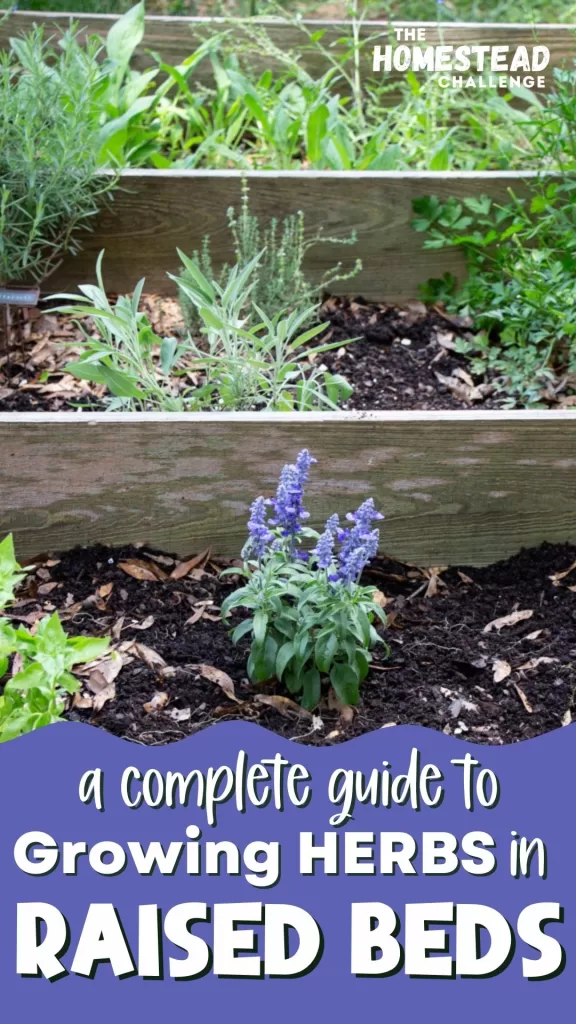
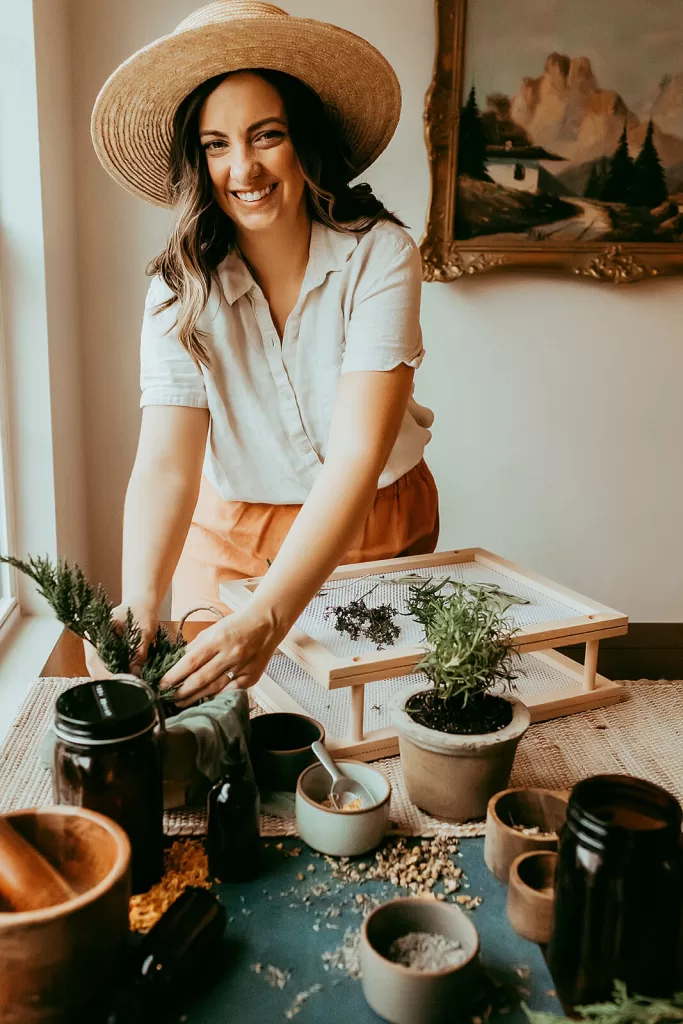
About the Author:
I’m Brittany, totally modern and mainstream turned crunchy mama!
Read more here about how I went from a totally incompetent cook and hyper-consumer to striving to live a more meaningful life from scratch.
I can’t wait to share my modern homesteading journey with you and I hope I inspire you to join along!

